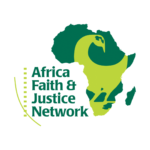The military operation, code named Operation Lightning Thunder, began on December 14th with approval from the Congolese and South Sudanese governments. President Joseph Kabila of the DR Congo gave explicit consent to Ugandan President Yoweri Museveni to target the LRA in their base camp in Congo and sent a small number of troops to assist in the ground operation. Since mid-2008, the LRA has terrorized the population in north-east DR Congo, abducting over 600 children, looting villages, raping women, and occasionally killing civilians. However, recognizing that his own army was stretched thin fighting the FDLR and CNDP rebel groups in the east, President Kabila gladly bequeathed military authority to the Ugandans to tackle the LRA.
Lightning Thunder was kept as secret as possible in the lead-up to the initial air strike, mainly because the Ugandans feared Kony would get early wind of the attack and escape to one of his many hideouts in Congo, Central African Republic, or South Sudan. Supposedly, the initial plan was more complex than the final product. Uganda intended to begin with an aerial bombardment by MiG-21 bombers, follow up with Mi-24 helicopter gunships, and conclude with a ground operation that could round up any stragglers. This plan, however, was hampered by poor weather conditions that prevented the super-sonic bombers from flying. Although putting off the attack might have allowed the weather to clear, it might also have been harder to keep the secret from Kony and other LRA high commanders.
So, Museveni ordered the army to carry out the attack, bombing somewhat haphazardly from the helicopter gunships. Kony managed to leave the camp about ten to fifteen minutes before the attack – no one knows yet whether he was tipped off or whether by luck he escaped the bombing. It is alleged that Kony found out about the attack with help from his friends in Khartoum, but it is unlikely that he was told the correct day and time. Regardless, instead of killing Kony (the real purpose of the mission), several other LRA members died, most of them recently abducted child soldiers.
The operation destroyed five LRA camps and caused them to scatter, leaving many of their more expensive belongings such as flight trackers, as well as necessities like food and clothing. Angered that Museveni would take such bold action, the LRA retaliated and went on a killing spree that has since been nicknamed the “Christmas massacres.” Churches have been attacked, homes burned, and people slaughtered. The LRA have also abducted as many as 200 children to fold into their ranks.
Over the weekend of January 10th, LRA spokesman David Matsanga led a delegation to deliver a letter to the UN envoy to the Uganda conflict, ex-Mozambique President Joachim Chissano. Matsanga told the BBC “the message is very clear: The LRA are interested in peace, that’s why the LRA wants a ceasefire… we are calling for a dialogue.” Months earlier, Chissano had arranged the signing of the Final Peace Agreement (FPA), to which Kony never showed. It is now widely understood that Kony stalled the signing several times in order to rebuild his troops, recruit child soldiers, and acquire sufficient food stocks.
Museveni claims that the military offensive was conducted to encourage Kony to come out of the bush to sign the FPA, and that ultimately, it was the frustration over Kony’s absence that prompted the military attack. If this is indeed true, then the letter delivered by the LRA delegation may bring the peace agreement one step closer to fruition. However, it is unlikely that Kony will be trusted again, after using the 2008 FPA process to his own advantage. Kony still fears that after signing the FPA, he will be arrested and taken to The Hague – the one point that has always stood between the LRA and a peace settlement.
An attack as poorly executed as this one was bound to result in further violence, instability, and death in the region. In a statement released on January 9th, Senator Russell Feingold (D-WI) declared that “Regional militaries have an important role to play in addressing the LRA threat, but I have long warned of the risks of rash and poorly planned military action and I am concerned the current offensive has been just that. It has not done enough to save rebel abductees, left civilians vulnerable to reprisal attacks by the rebels, and fueled regional instability.” A targeted military attack against Kony and top rebel leadership may in fact end the conflict, but an attack that utilizes aerial bombing cannot begin to protect the child soldiers who may be in the pathway of the bombs.
AFJN urges all actors to work toward a peaceful resolution to the LRA violence. Although President George Bush met with South Sudanese President Salva Kiir on January 7th, the U.S. did not articulate how it will help end the LRA crisis in Congo. We encourage you to visit the Resolve Uganda website (www.resolveuganda.org) to send a letter to your members of Congress asking them to protect children, arrest the LRA leaders, and appropriate money toward the reconstruction of northern Uganda. The events of the last several weeks indicate that the crisis is far from over – do your part to advocate for the lives of those affected by the LRA.
By Beth Tuckey
(This article was originally published in the January/February edition of Around Africa)
Two weeks after the Ugandan government initiated a botched military operation against the Lord’s Resistance Army (LRA) in DR Congo, the angered rebels initiated a string of attacks against the Congolese civilian population. According to reports from Caritas International and other news agencies, over 400 have been killed, nearly 200 abducted, and scores raped. To make matters worse, the Ugandan government is no closer to catching Joseph Kony, the LRA’s notorious leader, than they were before the military offensive. The rationale behind the Ugandan government’s action may have been legitimate, but its poor execution left civilians vulnerable to a vengeful rebel army.
